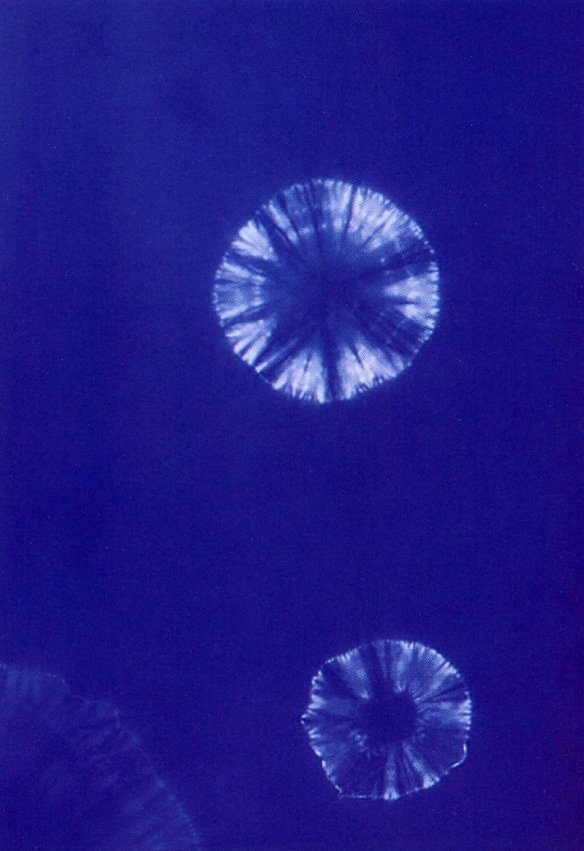
Ex Voto Hippie, 1988
Rosemarie Trockel
Ex Voto Hippie, 1988
Batik on cotton
search


Rosemarie Trockel
Ex Voto Hippie, 1988
Batik on cotton
Rosemarie Trockel represented Germany at the Venice Biennial in 1999, and exhibited at Documenta X in Kassel in 1997, with her installation Haus fur Schweine und Menschen (House for Pigs and Humans). This work, which was created together with artist Carsten Holler focused on man's relationship to animals, and allowed the audience to dwell under the same roof as a number of pigs, albeit separated from them by a one-way glass wall. In the book A house for pigs and people a series of questions is posed on the moral, epistemological and political relations between humans and animals, and more so th r I tions with ourselves. This is a fix for Trockel more generally in the variegated approaches and collaborations she has undertaken in 20 years that consider, as an inescapible truth within us (that we are foreign, to ourselves) the threshold of abjection and prejudice, she wishes to confront. It would be an error to marginalise her work as purely concerned with, for example, the issue of gender on this basis. The feminist discourse is informed in her aesthetic by those research areas undertaken by Trockel of anthropology, sociology, theology and mathematics. As a precursor of relational aesthetics, Trockel, in the meticulous web that sutures authorship and subject to the historical circumstances of production, has developed a critical vocabulary reflexing on signs and symbols often from a political agenda. Therefore, it would be better to view the interstices of the relation aesthetic as the subject positions that, interchanged with an audience, arguably connote a feminist representation. The subject/object locutions with the social investment of Dadaism's polemic, reclaim via deconstruction the ironic proposals of Marcel Duchamp.
The starting point for Trockel is often, drawing, like Duchamp, which becomes an instrument to excavate ideology embedded in the aesthetic. Her drawings, which are very often figurative, experiment with a kind of immediacy or performativity, that permits access to the 'other' out of epistemological certainty.
A breakthrough occurred in New York in the 1980's, as a part of German wave with the "knitted paintings." When Trockel in her knitted pictures uses emblems like the Woolwark, the Playboy rabbit and swastikas, she is identifying the function of the sign, its construction in the service of ideology. Terrorist balaclavas, excessively long stockings and deformations of fashion's erogenous zones permit the other to declare itself in terms of the collapse of meaning generated by ideological construction. The term "suture" is returned to its origin in the work of sewing, a clever invalidation of the surplus value of art. In a culture where originality and individualist expression are praised and linked solely to the male, knitting is placed in the category of activities associated with so-called female virtues. Knitted products are made in the private sphere, they are anonymous, require patience and zeal but do not put high demands on creative ability or intellectual effort. This in itself is of interest, from the view of worthiness vis-a-vis use-value. Trockel twists and turns the prejudices around this moralism: trivial, supposedly feminine material with a low cultural status. Her knitted paintings were created with a knitting machine and she used a computer to create patterns - thus juxtaposing "female crafts" with "male machine production". High/low functions are placed in absurd conjunction with surplus and aesthetic functions.
Since making the earliest knitted paintings, the artists has pursued the "suture" in several different directions. When the art scene started defining her as "the artist with the knitting", she did away with that restricting classification by cutting up and tearing her knitted work. Some of these works were transposed to silkscreen, and thereby demonstrated how the artist processes a so-called 'theme' over time, passing it through different media to deconceal the apparatus of ideology of stereotyping and gendering that inhibits the subject.
Stove Pictures. Trockel also identifies "the kitchen" as an expressive and critical space, being workplace, studio that can deviate from institutional agendas of art and 'display' of capital/ consumption. The stove significantly inspired her to produce many works in the 1980's and 1990's. In the early 1980's, Trockel presented stoves as floor sculptures. Later, the hanging stove pictures emerged, which at first glance appear to be abstract minimalist paintings, but on closer inspection turn out to be baked lacquer steel plates into which real stove burners have been inserted. The origin of the resistance to the full embrace of mass industrialisation and capital in the worker movement, Luddism, is manifest in some of these strategies.
She continues to work across media in political ways as to open to the agency of art as a zone of speculation and ambiguity, identifying the relationships between production and reproduction in aesthetics; especially in the cognitive mechanisms of control inherent in the culture industry.